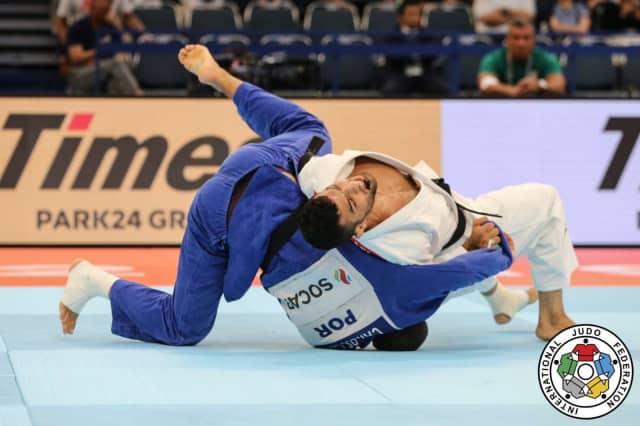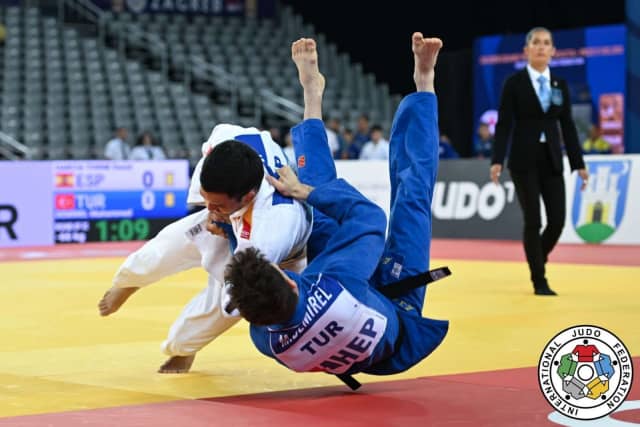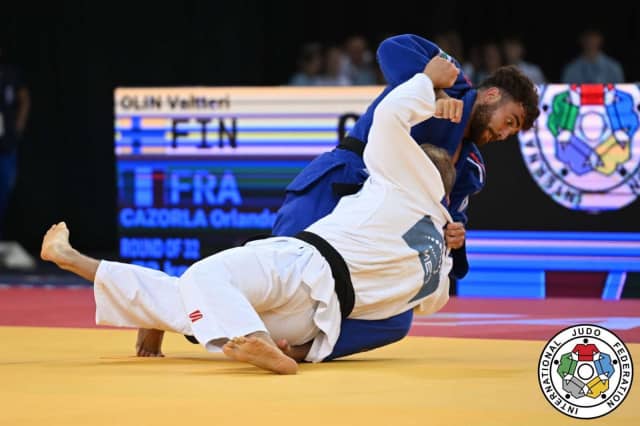Any new innovation that is shown to be consistently successful is quickly and widely adopted and the process starts afresh: how can one defend it? How can one counter it? A prime example of such a technique in tachi-waza is the kata-guruma variation popularised by -81kg Olympic silver medallist Saied Mollaei. From a double sleeve grip, Mollaei ducks his head under his opponent’s armpit, squats low and leans backwards to project his opponent over his shoulder for a spectacular throw. Mollaei still uses this technique frequently in competition.
Despite its continued efficacy, some counters and defences have emerged as more athletes become savvy to it and with that has come fresh innovation. On day 1 at the Zagreb Grand Prix 2023, Spain’s David Garcia Torne produced an excellent adaptation of this technique, taking advantage of uke’s tendency to squat and lean back to defend against the attack. Against Aibolat Ystybay (KAZ) in the quarter-finals, he ducked his head under the armpit, anticipating a backwards reaction from the Kazakh, and simultaneously hooked the opposite side leg for o-uchi-gari, landing his opponent cleanly on his back just 40 seconds into the contest. It was a great example of action, reaction and progression.
Technical advancement in the sport is sometimes even more accelerated in ne-waza. In the standing phases, a new attack or defensive reaction could easily lead to a scoring counter but on the ground, where gravity is less of an issue and the action is more confined, this is less likely but still a concern. As such, new developments on the ground are more visible.
The turnover into ura-gatame, mastered and popularised by Georgia’s great champion Varlam Liparteliani, is now a weapon in the arsenals of many judoka on the world circuit and, as is necessary, new methods have developed to counteract it. At -81kg in Zagreb, one such development was utilised by eventual bronze medallist Mykhailo Svidrak (UKR) in his thrilling back-and-forth contest with Eetu Ihanamaki (FIN) in round 2.
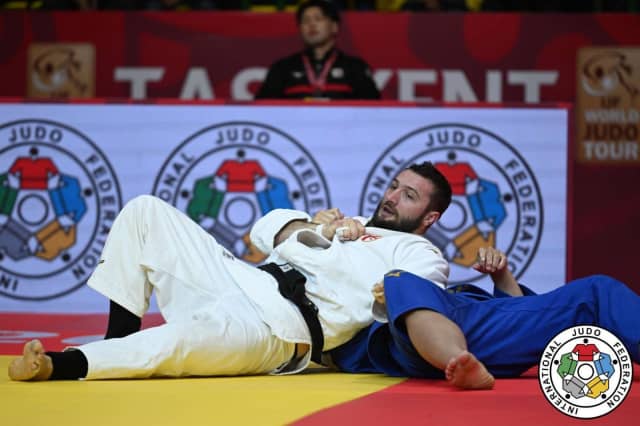
Ihanamaki latched onto Svidrak’s arm to attempt the roll but Svidrak escaped and they found themselves interlocked in their initial position again. This time, rather than overhook the arm in the normal way, Svidrak changed tack, tying-off his opponent’s arm using the skirt of the jacket and rolling him over. The Finnish athlete tried to come up on top to secure the ura-gatame, but the Ukrainian grabbed the leg and climbed up on top, not into ura-gatame, but a much stronger yoko-shiho-gatame. After a couple of escape attempts, Svidrak pinned Ihanamaki for ippon; a brilliant ne-waza exchange culminating in a fine finish.
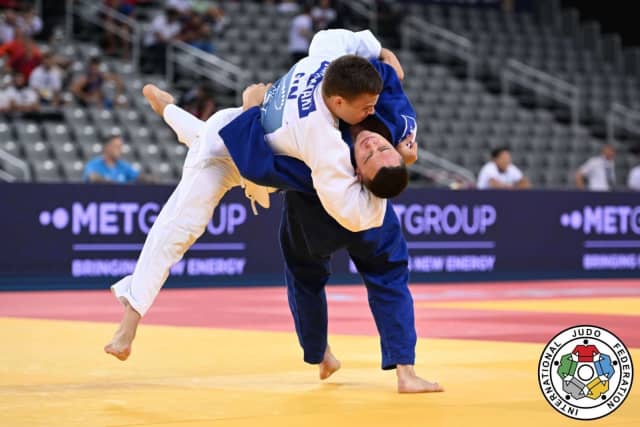
The kata-sankaku grip is one that has received increased attention in recent years, as it can be dangerous if it is misused. Use of the grip to throw an opponent results in direct hansoku-make but when applied on the ground, provided the spine is not attacked directly, it can be used to turn a face-down opponent and create a strong pin. Such turnovers are the favourites of athletes such as Milica Nikolic (SRB) at -48kg but are widely used on the international circuit.
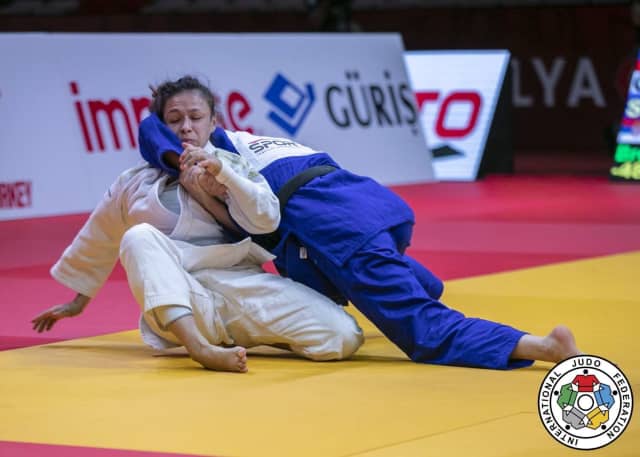
There was an interesting counter and reversal to this turnover seen in the -73kg category in Zagreb, where France’s Orlando Cazorla took on the Netherlands’ Koen Heg in round 1. Whenever Heg ended up on top of his opponent on the ground, he took a modified version of the grip which involved grabbing his own sleeve, trying to turn the Frenchman over in both directions.
When it looked like Heg was about to secure osaekomi, Cazorla bridged and pushed backwards into him, which prevented him from turning face down and locking in the hold. Not only that, Cazorla continued pushing and rotated himself around on top of Heg, then freed his head and held his opponent down to win the contest. It was a great example of problem solving to reverse a turnover that is typically very difficult to stop. Earlier in the fight, Cazorla had also demonstrated another interesting reversal to the ura-gatame roll too, but Heg fought hard to get toketa.
Events like the Zagreb Grand Prix are a showcase for these new technical innovations, often more so than at grand slams or world championships, where the world’s best tend to display their ultra-refined and established techniques. Grand prix events, however, feature a much larger spread of athletes from all tiers of the World Ranking List, which provides ample opportunity to try new things in high level competition. All that is to remind us of the importance of the grand prix as a platform for development at all levels of the sport. Long may they continue.

